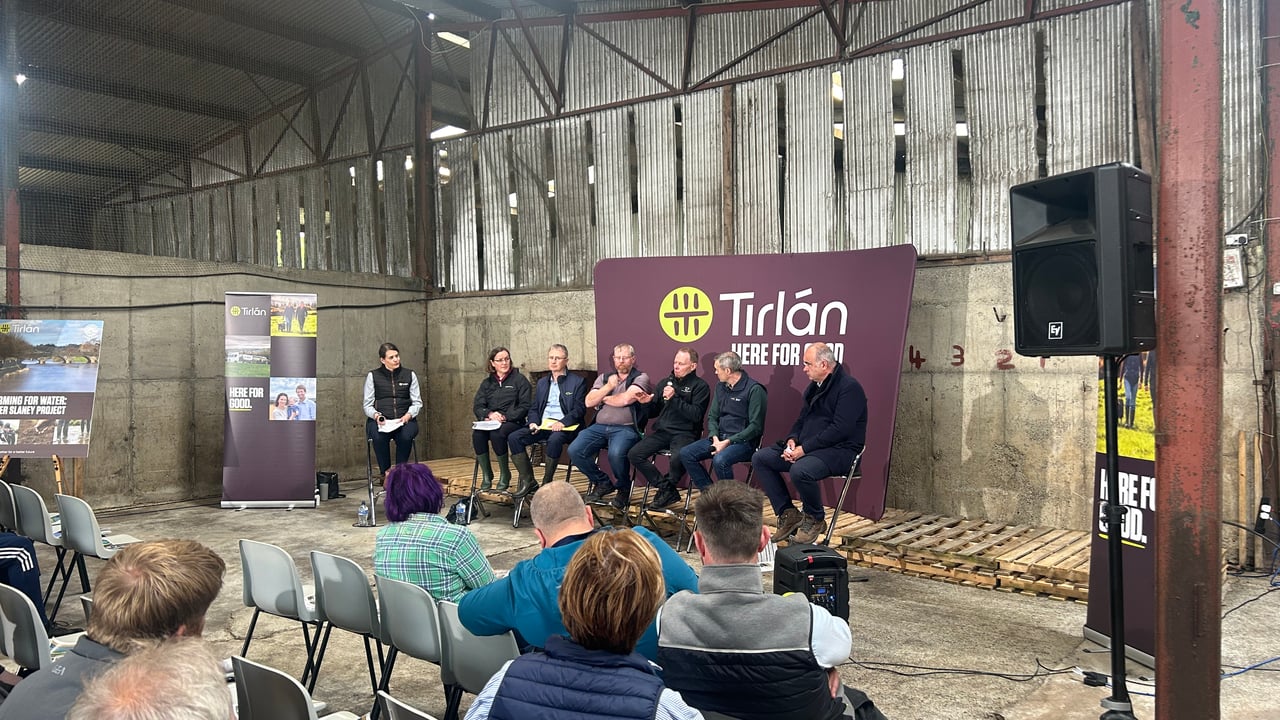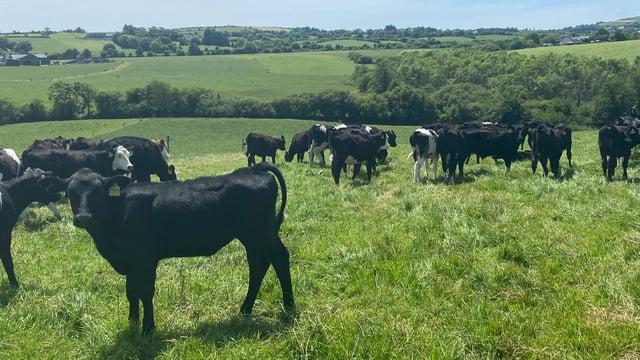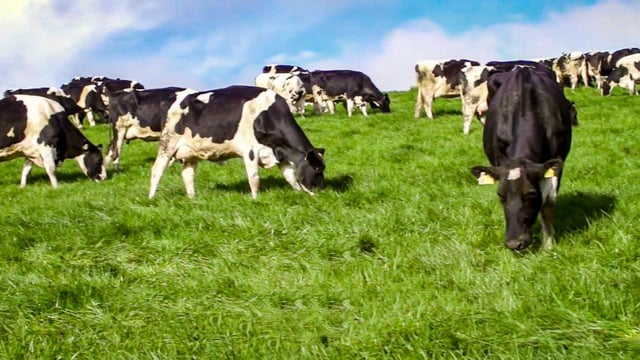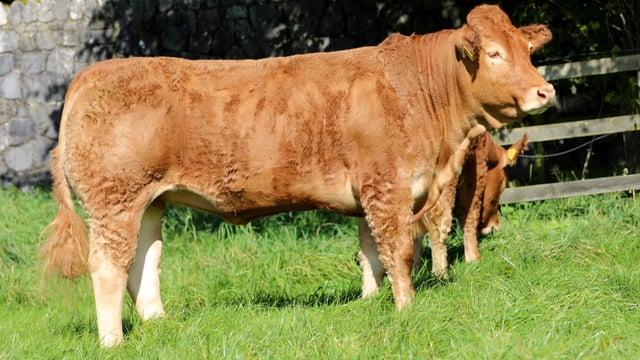'Farming for the Future' farm walk highlights farmers' concerns
Agriland attended the 'Farming for the Future' open farm walk and panel discussion, which highlighted the measures that can be taken on farm level to maintain the derogation and improve water quality.
The event took place at Donal Kavanagh's farm in Baltinglass, Co. Wicklow, where farmers had the opportunity to ask challenging questions and concerns around the future of the derogation and water quality.
Tirlán’s ‘Farming for Water: River Slaney’ project that is working to improve water quality in an effort to retain the Nitrates Derogation.
Speakers at the event included representatives from Tirlán, Teagasc, the Department of Agriculture, the Environmental Protection Agency (EPA), the Irish Farmers’ Association (IFA), the ICMSA and the Local Authority Waters Programme (LawPro).
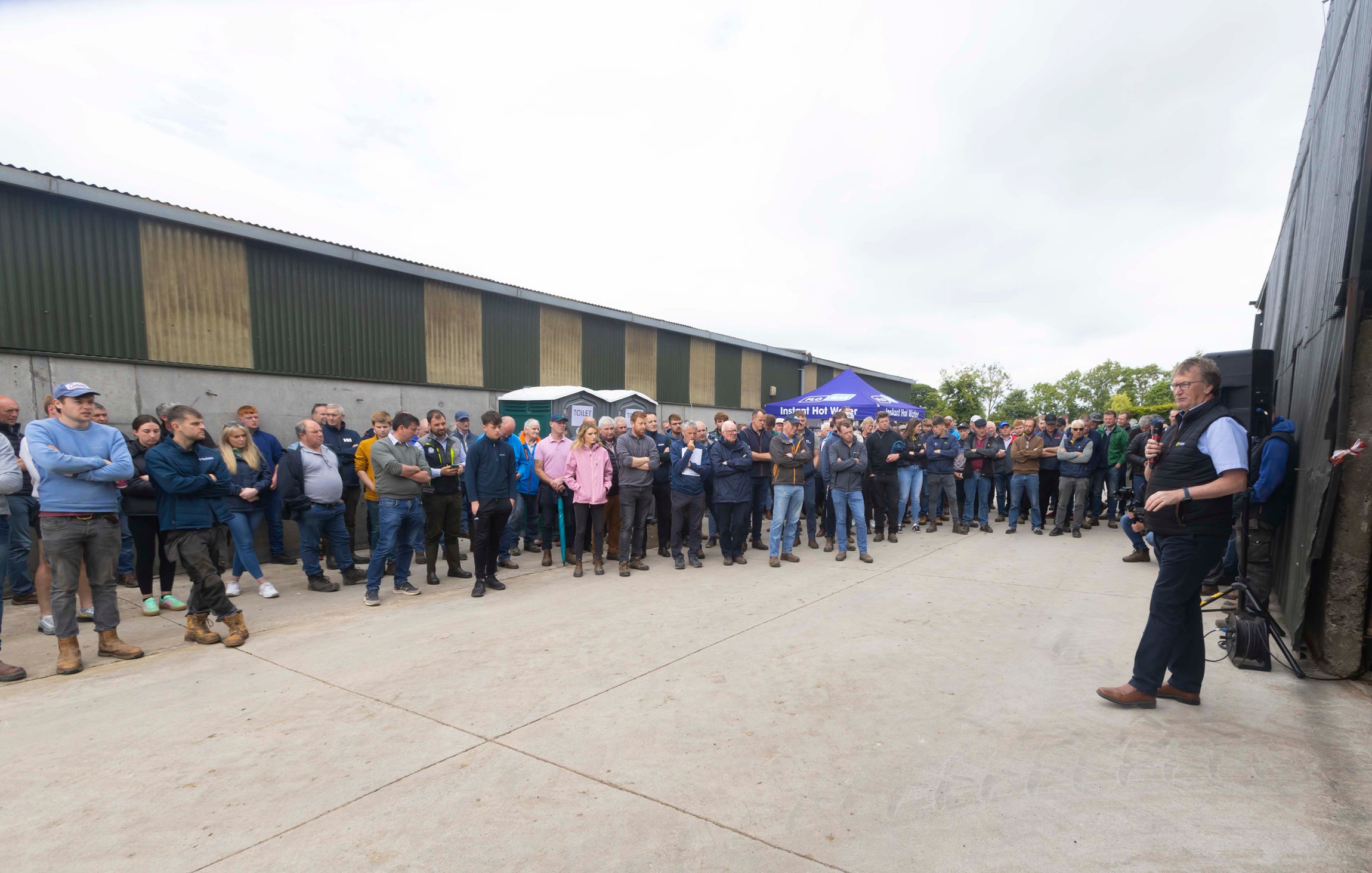
The turnout at the event was a testament to how concerning the derogation and water quality is to farmers, and there seems to be an understanding among farmers that there needs to be changes made to fix water quality on the ground.
The understanding is that agriculture is undergoing a significant period of change and during the farm walk.
According to a representative from Tirlán, the stand out policy issue is the protection of water quality and the future of the nitrates derogation.
The stand out question was whether it is possible to farm at the current 220kg of organic nitrogen (N)/ha and deliver good water quality.
Director of Teagasc, Dr. Frank O'Meara, talked us through how farmers can improve their nutrient management and nitrogen use efficiency through their 'Better Farming For Water; 8 Actions for Change' campaign.
The eight actions include:
- Reduce purchased nitrogen (N) and phosphorus (P) surplus/ha;
- Ensure soil fertility is optimal for lime, P and potassium (K);
- Ensure application of fertiliser and organic manure at appropriate times and conditions;
- Have sufficient slurry and soiled water storage capacity;
- Manage and minimise nutrient loss from farmyards and roadways;
- Fence off watercourses to prevent bovine access;
- Promote targeted use of mitigation actions such as riparian margins, buffer strips and sediment traps to mitigate nutrient and sediment loss to water;
- Maintain over-winter green cover to reduce nutrient leaching from tillage soils.
These can be categorised into three ailments: nutrient management, farmyard management, and land management.
When asked about whether it is possible to farm at 220 N/ha, Dr. O'Meara said:
"We absolutely can farm at 220 and be compliant with water quality. We have brought in lots of measures to reduce nitrogen such as lower stocking rates , banding, and chemical N limits."
Director of Policy and Chief Economist at the IFA, Tadhg Buckley, talked about the importance of the nitrates derogation to the dairy industry.
“Losing the nitrates derogation would be like a hard Brexit for the dairy sector," Buckley stated.
Buckley added that all famers need to get involved and not just those in derogation, as he feels that it is going to take a combined effort to take on actions and make a difference.
Buckley emphasised that securing the derogation is not just an agricultural issue, but it is an issue for the whole Irish economy, as one in 10ha in the country is in derogation; with one in 4ha in derogation in Cork and Kilkenny.
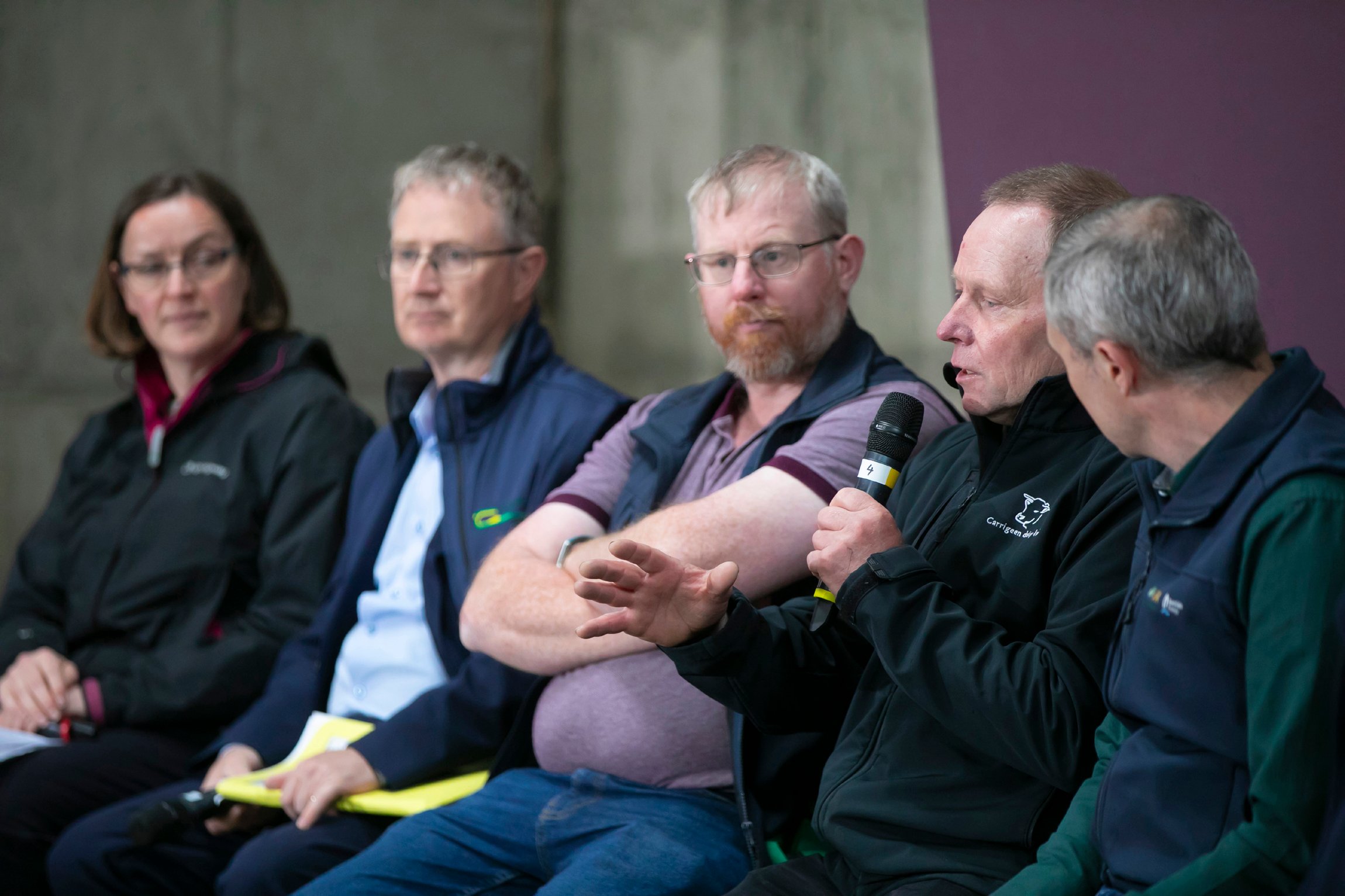
Vice chair of the farm and rural affairs committee of the ICSMA, Gerald O'Reilly, voiced his concern about the lack of clarity for the next 12 to 18 months.
"Farmers on the ground are anxious as they can't plan for the future and don't know whether they can invest into their business or not," O'Reilly said.
Programme manager of the Environmental Protection Agency (EPA) Water Programme, Marie Gurrie, said the objective has to be protecting good water quality areas and improving the catchments that are not meeting good status.
Gurrie said that farmers need to understand what they can do and they need to do, to achieve compliance, improve efficiency and mitigate the impact farming has on water quality.
The host farmer, Donal Kavanagh took those in attendance through the steps he has taken on his farm to improve water quality.
Through soil testing, Kavanagh was able to gather the knowledge on his soil nutrient requirements, which made his slurry spreading a lot easier while applying the correct rates of lime, phosphorus (P) and potassium (K).
The slurry was also tested and from these results he was able to now know his N, P and K for each 1000gal of slurry.
"By knowing the N, P, and K of our slurry we can cut back on the amount of chemical fertiliser required," he said.
Through new slurry storage facilities on the farm, Kavanagh is not obliged to get slurry out in the early spring, giving him the option to apply slurry in more favourable conditions which will limit nutrient run-off.
Some of the measures taken by Kavanagh to improve his farm sustainability and production, as follows:
| Soil pH | 70% of soils of a pH over 6.2 Lime applied: 124t in 2022 and 266t in 2023 |
| Soil fertility | 34% of soils optimum for pH, P and K |
| Clover | 65% of the farm incorporated |
| Slurry | Slurry tested with excess storage Spread in spring using LESS |
| Protected urea | 66% of N applied as protected urea + sulphur |
| Precision application | GPS Five and 10 metre buffer zones on farm |
| Using the fertiliser plan | Shopping list of of fertilisers Target fields using soil and clover score maps |
| Better NUE | 171kg chemical N/ha (down 33% since 2021) 26% NUE (up from 19.3% in 2021) |
The use of a fertiliser plan has been hugely beneficial for Kavanagh, as he knows what each paddock is lacking, nutrient wise, and the plan helps targets those paddocks.
Through all of these measures, Kavanagh has reduced his chemical N use by 33% since 2021, while still growing 13.5t of grass last year.

